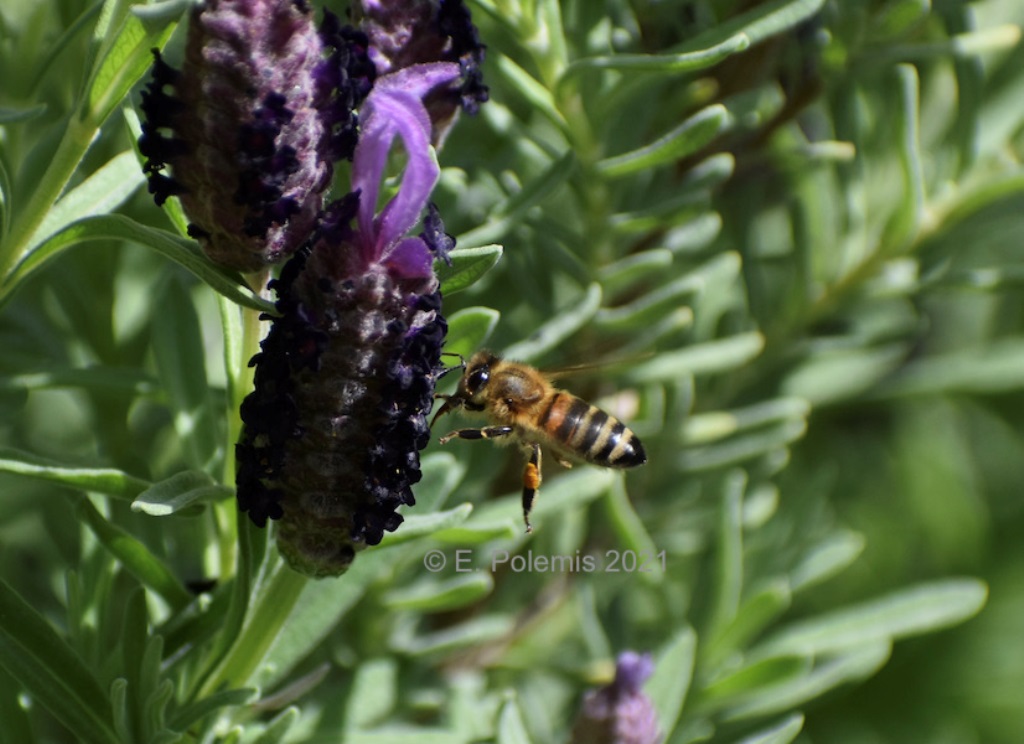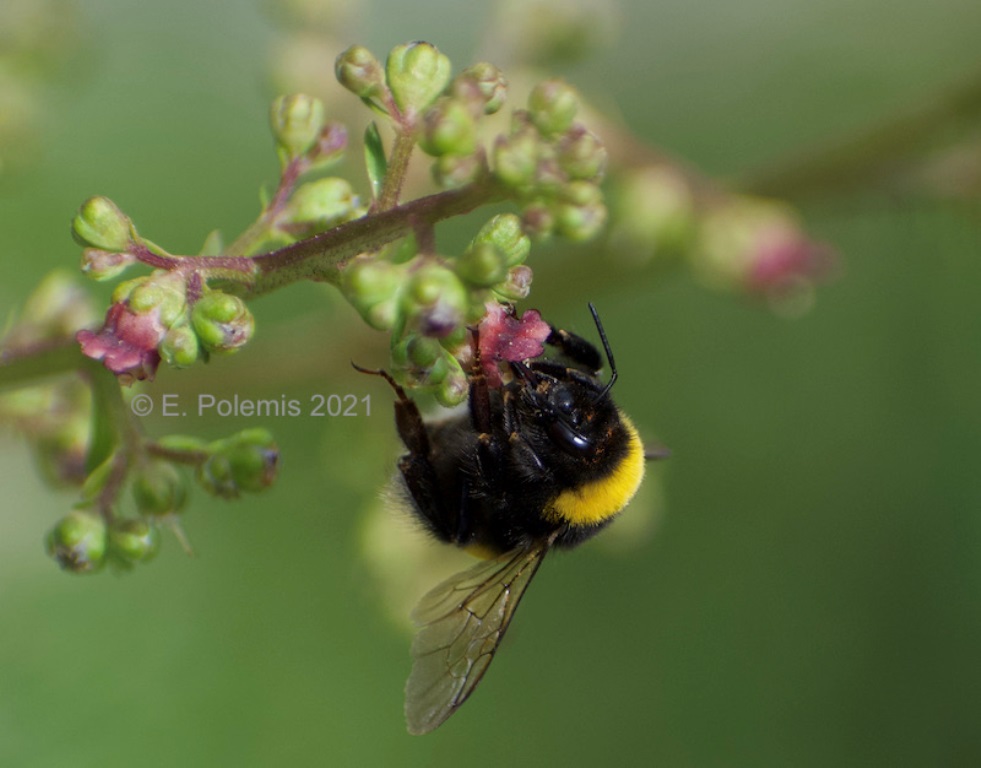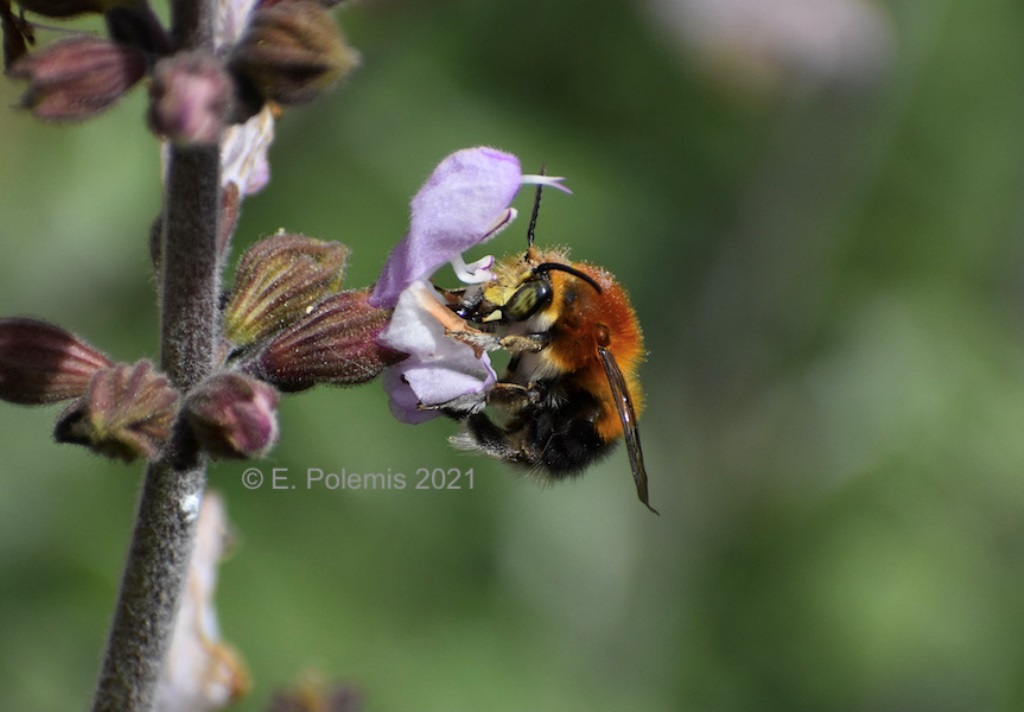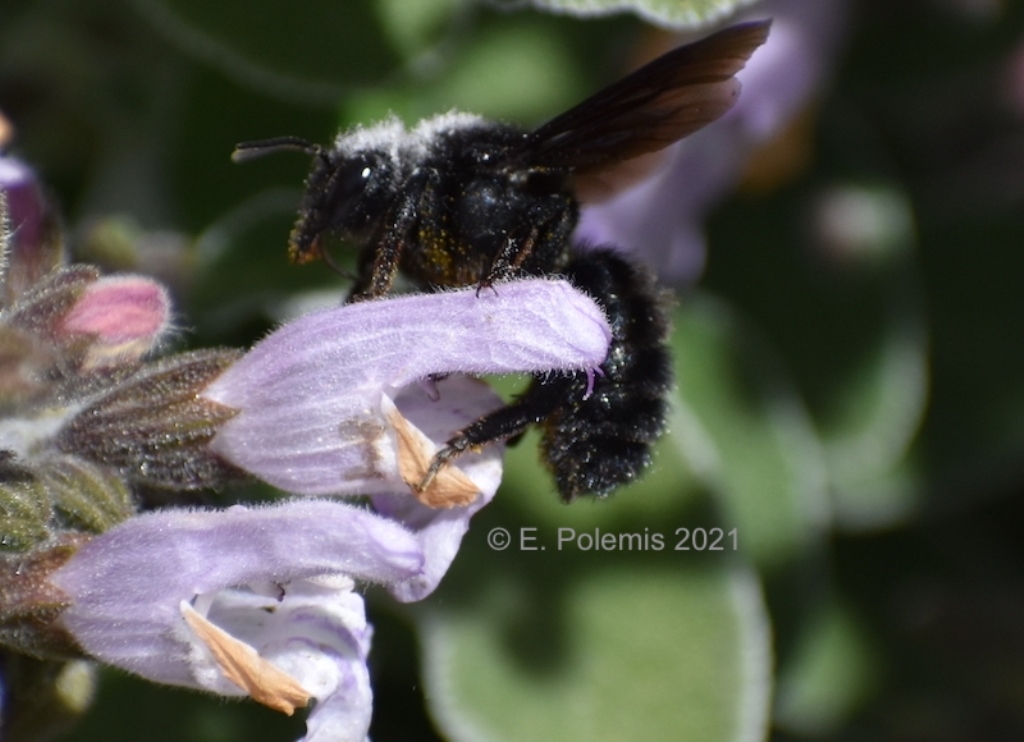Spring has sprung in Andros, and the Botanical Garden that was established within the framework of the “LIFE Andros Park” project and started operating at the Agadaki Estate of the Kaireios Library since last summer, is in full bloom! The Andriot collaborator of the project, agronomist- mycologist Ilias Polemis visited the Garden in March and April and recorded with his camera the spring blossoming of the plants and also the “traffic” at the higher terrace of the Estate, where the aromatic/medicinal species of bushes and phrygana of Andros and the Aegean Sea have been planted.

While, unfortunately, the tourist “traffic” is affected by strict and necessary restrictions due to the pandemic, but the insect pollinators have been highly active for a few weeks now. So, the Botanical Garden is thriving! Apart from the common bees showing a strong preference for wild lavender these days, three species of wild bees, which visited regularly the sage, as well as another plant species of the Garden, known by its scientific name Scrophularia heterophylla, were recognized with the help of Theodora Petanidou (Professor of Ecology in the Aegean University).
As Professor Petanidou – an expert in insect pollinators and scientific coordinator of the project LIFE TERRACESCAPE, also implemented on Andros – explained to us, the insect species that I. Polemis spotted and photographed are the following:

Bombus terrestris: A common bumblebee species, one of the few species found in the Aegean. Like all bumblebees, it’s a social insect, with a queen, workers and drones. Early in spring the queen is the one that visits flowers in her attempt to later set up her colony by growing the first workers and only workers. Thanks to its thick hair, being active year-round and its ability to thermoregulate (therefore to be active in low temperatures as well), it is one of the most effective pollinators. That’s why it has been used worldwide for pollination in greenhouses (e.g. for tomato plants).

Habropoda tarsata: It belongs to the big group of anthophorine bees which are active early in spring and until May, mainly at nectar plants (sage, asphodel, vetch). It belongs to the solidary bees, in other words to those without social structure. The females are assigned to build the nest by digging the soil and to collect supplies (pollen and nectar) for the offspring, leaving their fertilization to the males that visit the flowers only occasionally.

Megachile parietina: This beautiful black “bride” belongs to the leaf-cutter bees, which have a really long proboscis enabling access to nectar on deeper flowers, while the female ones have rigid hair in the abdomen, like a broom, for the collection of pollen. It is a solitary bee – active also in the midst of summer – with many peculiarities, such as its sexual dimorphism (the female is pitch black, while the male brown-grey), and the way it builds its nest (always the female one): with grains of sand, collected by ventilating the sandy soil and plastering them with care on rocks, cement, and even marble in cemeteries.
